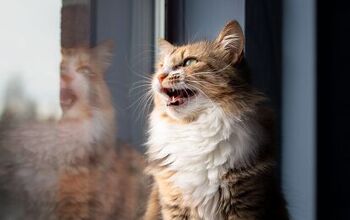The Benefits of Hermit Crabs in Your Aquarium

If you have ever gone on vacation to the beach, the chances are good that you are familiar with hermit crabs. But hermit crabs don’t just make great pets for kids, they can also make for a beneficial addition to your marine tank. These saltwater invertebrates could help to keep your saltwater tank clean and debris-free which means less maintenance for you!
What Benefits do Hermit Crabs Provide?
Hermit crabs make an excellent addition to any saltwater cleanup crew because they are natural scavengers. This means that they will sift through the substrate in your tank, feeding on bits of detritus that they find along the way. Things like uneaten fish food, algae, and decaying organic matter all become food for your hermit crabs.
Related: Are You Feelin’ Crabby?
They work even harder than algae-eating species of fish and because they feed on leftovers you don’t have to worry about too much supplemental feeding. As long as you supplement their diet occasionally with plant matter, crab pellets and pieces of fish or chicken, they will be just fine. As your hermit crabs dig around in your tank, they will also keep your substrate aerated which can be helpful for the beneficial bacteria living in your tank substrate.
Tips for Keeping Hermit Crabs at Home
Keeping hermit crabs in the marine tank is fairly easy because they have similar tank requirements to most saltwater fish species and they are generally hardy in regard to minor changes in tank parameters. The ideal pH range for hermit crabs is between 8.0 and 8.4 and they prefer a specific gravity between 1.021 and 1.028 with undetectable ammonia and nitrite levels with nitrate levels below 10 ppm. Your crab will also prefer a kH between 150 and 215 ppm.
Related: Top 5 Invertebrates to Hire For Your Freshwater Cleanup Crew
In terms of decorations in the tank, your hermit crab carries his home on his back and he can retreat into it when needed – this means that you don’t have to worry about providing too much extra shelter in your tank.
Top Recommended Species of Hermit Crab
There are many different species of hermit crab out there so you can choose the one that best suits your tank. If you need help deciding, consider one of these top three recommended species of hermit crab:
- Electric Blue Hermit Crab: This species of hermit crab is named for its bright blue color and it is one of the rarer species of hermit crab, though not impossible to find. These hermit crabs grow up to 2 inches long and, in addition to feeding on detritus, they also feed on cyanobacteria and green hair algae – two pests that saltwater fish tend to ignore.
- Dwarf Zebra Hermit Crab: The dwarf zebra hermit crab only grows up to 1 inch in length and it is one of the most popular hermit crab species. These crabs are covered in black and white bands and they have very large claws to defend themselves against predators.
- Scarlet Reef Hermit Crab: Named for their bright red coloration, the scarlet reef hermit crab is particularly popular in reef tank environments. This hermit crab species grows up to 1 ½ inches and they are a great choice for tanks with small species of fish because they do not tend to bother other tank inhabitants like some hermit crabs do.
Hermit crabs are more than just another tank inhabitant – they can actually be beneficial for your saltwater tank. If you want to make them even more fun, provide them with some painted shells to move into!

Kate Barrington is the loving owner of two cats (Bagel and Munchkin) and a noisy herd of guinea pigs. Having grown up with golden retrievers, Kate has a great deal of experience with dogs but labels herself a lover of all pets. Having received a Bachelor's degree in English, Kate has combined her love for pets and her passion for writing to create her own freelance writing business, specializing in the pet niche.
More by Kate Barrington






















